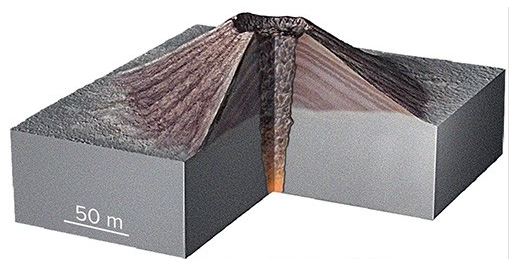Fly to Point 6 and then determine the angle of repose (the steepest angle loose material can achieve before it begins to move) by calculating the gradient of the deposit. Use the ruler function to determine the distance (in miles) between Points 5 and 6, and compare the elevation difference.
To answer the question, go to the Hess Physical Geography Laboratory Manual, 12th edition, website at www.MasteringGeography.com, then Exercise 38, and select “Exercise 38 Part V Google Earth™” to open a KMZ file in Google Earth™, or scan the QR (Quick Response) code for this exercise and view “Exercise 38 Part V Google EarthTM video.”


You might also like to view...
The primary worldwide benefit of the Green Revolution has been an increase in
A) food production. B) environmental benefits. C) land reform. D) wages for farmers. E) conflicts between the primary and secondary sectors.
This volcano is relatively small and composed of volcanic cinders. What kind of volcano is it?

A) Cinder cone
B) Shield volcano
C) Composite volcano
D) Volcanic dome
E) Caldera
An uncharged particle in the nucleus of an atom:a
neutron d. isotope b. proton e. electron 17 c. ion
In terms of stability, mT air masses formed over the Gulf of Mexico are quite similar to the mT air masses formed over the Pacific
Indicate whether the statement is true or false